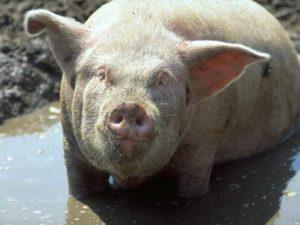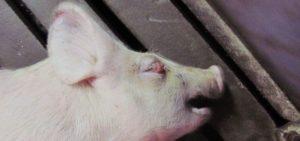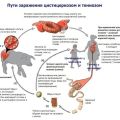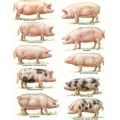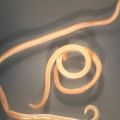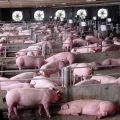Description and symptoms of infection of pigs with cysticercosis, methods of treatment of finnosis
Living and feeding conditions for pigs create conditions for the development of cysticercosis (or finnosis). This disease is dangerous not only for animals, but also for people who eat meat. In pigs, cysticercosis develops as a result of infection with parasites that enter the body while eating. Until recently, this pathology belonged to incurable diseases due to the lack of an active drug.
What kind of disease and how dangerous
Cysticercosis is a parasitic disease that occurs mainly when an animal is infected with a bovine or pork tapeworm. Infection occurs when eating foods that contain helminth larvae.
Pigs are infected with two types of cestodoses (another name for helminthiases): cellulose and tenuikol. The first type of the disease develops against the background of the penetration of pork tapeworm eggs into the body. After infection, bubbles with liquid up to 15 millimeters in diameter appear on the internal organs of the pig.
More often, this type of helminth affects:
- muscle tissue;
- internal organs (especially the heart);
- brain and spinal cord;
- limbs.
The main danger of tapeworms, which include bovine and pork tapeworms, is that the development cycle of these parasites ends in the human body. That is, the helminths inside people reach maturity and begin to lay eggs.

Another danger of tapeworms is the increased viability of eggs. The latter pose a threat to the body of animals even after complete drying. Moreover, the impact of aggressive substances such as chlorine solution does not lead to the death of the larvae. In this case, the lifespan of the parasites is reduced, but the latter remain dangerous to animals.
Pork tapeworm infection more often occurs in the spring and summer. This is explained by the fact that helminth eggs remain viable for a long time at temperatures above 18 degrees and in conditions of high humidity. Cysticercosis tenuikolny (better known as finnosis) develops against the background of infection with bovine tapeworm. In this case, helminths penetrate the internal organs (more often the liver), provoking the formation of a thin-walled vesicle with a liquid with a diameter of 5 millimeters to 5 centimeters.
Infection with cysticercosis tenuikolny is possible at any time of the year. The risk group for infection includes young pigs.
In order to prevent infection, both animals and humans, with cysticercosis, it is necessary to know how this disease develops. This happens in several stages:
- Clutching and maturation of helminth eggs occur in the human body.
- Eggs, along with human waste products, enter the environment.
- Pigs, consuming water or food in pastures, become infected with tapeworm eggs.
- Penetrating into the stomach of pigs, under the influence of the juice, the eggs are deprived of a dense shell, which protects against the negative effects of the environment.
- The released larvae enter the bloodstream and spread throughout the body.
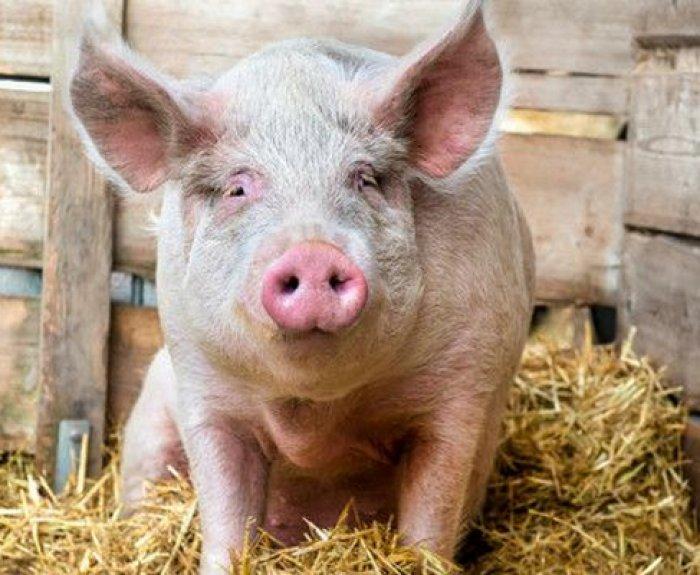
After that, the larvae form these bubbles in the organs. If a person consumes raw or poorly roasted meat containing helminths, the latter, having penetrated into a new organism, reach the sexually mature stage. This process takes up to 90 days.
In addition to food, guard dogs are considered a source of cysticercosis infection for pigs.
Common symptoms and signs
The intensity of the manifestation of symptoms of the disease directly depends on the number of helminths that have entered the body and the state of immunity of animals. Cysticercosis is characterized by the following features:
- dysfunction of the gastrointestinal tract (diarrhea and other symptoms);
- inflammation of muscle tissue, which indicates a large accumulation of larvae in a limited area;
- itchy skin and swelling;
- blue discoloration of the mucous membranes, which indicates heart damage;
- damage to small capillaries;
- body temperature over 40 degrees.
In the case of severe invasion, disturbances in the functioning of the nervous system are possible. This manifests itself in the form of paresis (partial numbness) of the limbs, tremors and general weakness. Also, the appearance of signs of hepatitis, characteristic of the defeat of the liver by helminths, is not excluded. In addition, due to a sharp allergic reaction, respiratory failure is possible. As a result, infection with cysticercosis can lead to the death of the animal due to the failure of internal organs.
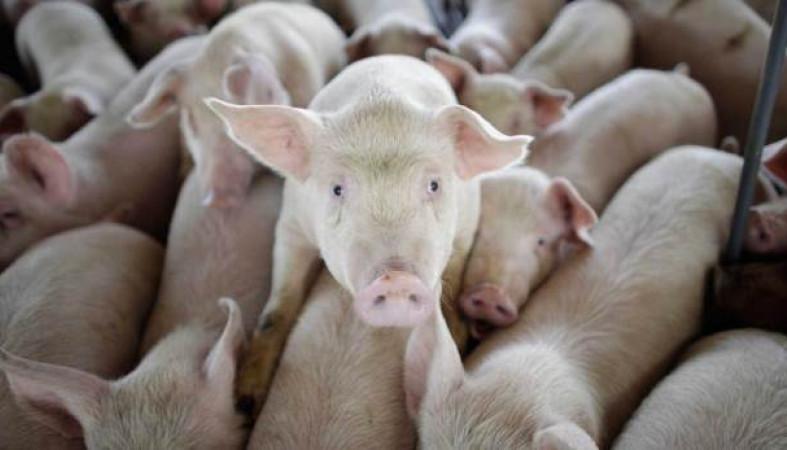
These symptoms disturb during the first two weeks after infection. During this period, helminth larvae migrate through the body, provoking disruptions in the work of internal organs. In the case of a minor invasion, the disease is asymptomatic.
Diagnosis of the disease
It is impossible to detect cysticercosis in pigs. The disease is diagnosed only in killed animals. If more than three live parasites are found, the meat is recommended to be destroyed. With a smaller number of helminths, the carcass and internal organs undergo mandatory processing. If, after slaughter, cases of infection of animals are detected, the veterinarian reports the presence of infection in a particular farm to the relevant authorities.
How to treat cysticercosis (finnosis) of pigs
Finnoza treatment is not cost effective today. However, despite this, Praziquantel can be used against the disease. The dosage of the medication is calculated based on the total weight of the infected animal. For the treatment of cysticercosis, 50 milligrams of the drug are used for each kilogram of the pig's weight.
In this case, the effectiveness of the therapy can be found out only after the slaughter of the animal. Therefore, an important condition for preventing the spread of the disease to livestock is to take preventive measures.

Preventive actions
Prevention of finnosis in pigs consists in observing the following rules:
- timely treatment of helminthiasis in dogs that guard pigs;
- avoid contact of livestock with wild animals;
- latrines on the farm must be equipped in accordance with the current sanitary standards;
- compulsory training of owners and employees of pig farms about the peculiarities of infection and development of cysticercosis.
If pigs are raised in small farms, then the owners of the latter should exclude feeding animals near settlements. Slaughtering livestock on the farm is prohibited.This procedure, in order to prevent the spread of helminthiasis, must be carried out at specialized points, which provide equipment designed to identify parasite larvae.
Another important condition for preventing the development of the disease is that persons who have passed the appropriate examination are allowed to work with pigs. That is, a person infected with helminths should not come into contact with animals.
